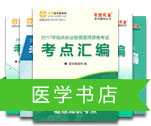Q&A: swine flu treatment
治疗是否有效?
据英国卫生机构透露,测试显示人感染H1N1病毒(猪流感)可以使用抗病毒药物oseltamavir (达菲)和zanamivir(瑞沙)治疗。昨天,卫生大臣艾伦约翰逊表示,达菲在墨西哥已被证明是有效的治疗药物。达菲的需求已经达到了历史的最高值,它是片剂形式的,而瑞沙必须被吸入。
Is treatment available and does it work?
Testing has shown that the human swine influenza H1N1 can be treated with the antivirals oseltamavir (Tamiflu) and zanamivir (Relenza), according to the UK's Health Protection Agency. The health secretary, Alan Johnson, said yesterday that Tamiflu had proved effective on patients in Mexico. Demand has historically been greatest for Tamiflu, which comes in tablet form, while Relenza must be inhaled.
抗病毒药物治疗方法是什么呢?
药物减轻某些症状,减少可能造成严重的并发症的机会例如肺炎,并且一天左右切断疾病的长度。最重要的是,它们还会减少病毒在人和人之间传染的几率。政府估计,如果没有抗病毒药物,这种疾病在英国大流行会造成多达750000人死亡。
What do antiviral treatments do?
Drugs relieve some of the symptoms, reduce the potential for serious complications like pneumonia and cut the length of the illness by around a day. Crucially, they also reduce transmission of the virus from person to person. The government estimates that up to 750,000 people could die in the UK during a pandemic without antivirals.
这些药物我们有多少呢?
NHS(英国国民健康保险制度)今年早些时候与制药公司罗氏公司(制造达菲和GlaxoSmithKline的公司)签订合同,瑞沙有双倍储存量,使我们的总储量为三千三百五十万疗程。
How much of these drugs do we have?
The NHS signed contracts earlier this year with pharmaceutical companies Roche, which makes Tamiflu, and GlaxoSmithKline, which makes Relenza, to double its store of antiviral drugs, bringing our total capacity to 33.5 million treatment courses.
够了吗?
假如每个人都生病的话,政府的储量可以普惠50 %的人口。英国已经是举世公认的一个准备得最好的国家之一。以前流感大流行感染人口比例在25 %和35 %之间。医.学教育.网搜集整理
Is that enough?
The government's store would cover 50% of the population – everyone predicted to fall ill in the event of a pandemic. It says the UK is already widely recognised as one of the best prepared countries in the world. Previous flu pandemics have infected between 25% and 35% of the population.
疫苗的情况?
科学家们正致力于开发一种新的疫苗。但是,记者在卢森堡欧盟委员会通报会上被告知,虽然业内人士正在尽快的工作,新措施也意味着它上市的时间比正常疫苗更快,但这个过程可能仍然需要半年时间。 医.学教.育网搜.集整理
What about a vaccine?
Scientists are working on developing a vaccine against the new strain. But reporters at a European commission briefing in Luxembourg were told that although the industry was working as fast as possible and new measures meant it could be on the market much quicker than a normal vaccine, the process could still take up to half a year.










 扫一扫立即下载
扫一扫立即下载


